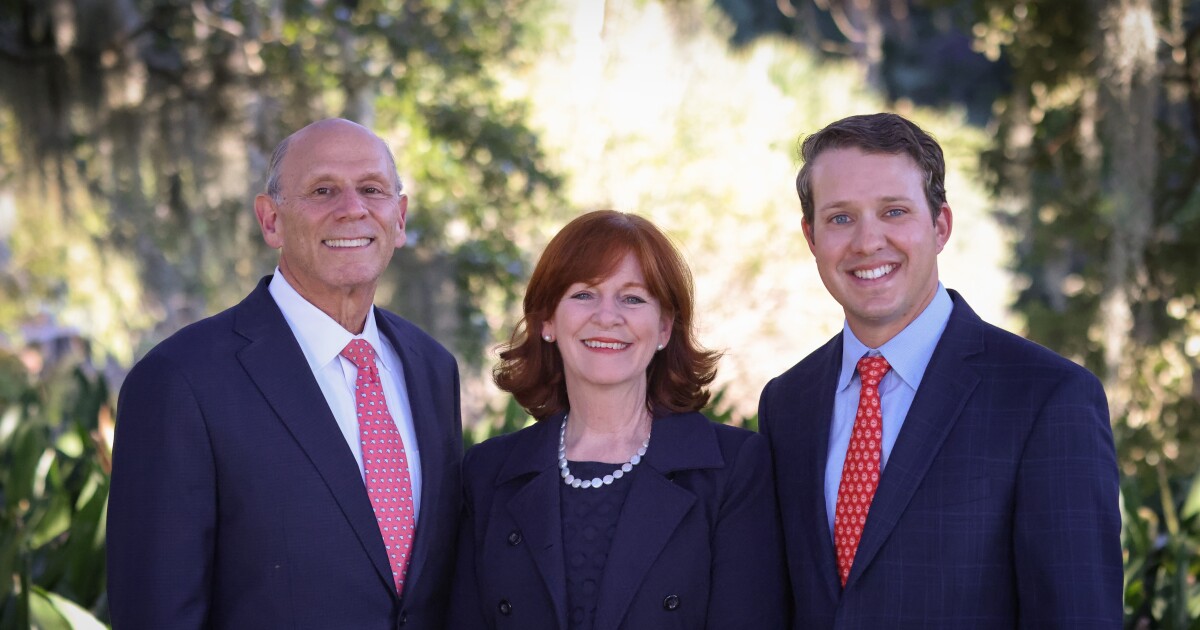Financial advisors and their industry can either help heal trauma tied to money and wealth — or worsen it, hurting people’s finances and increasing the disparities, according to a new book.
“Overcoming Financial Trauma: How to Break Free from Guilt, Build Wealth and Redefine Success” (Wiley) by Rahkim Sabree, a financial therapist and accredited financial counselor who is the current social media and marketing chair of the Financial Therapy Association, amounts to a manual for prospective wealthbuilders and the industry on the problem of financial trauma. The book, Sabree’s second after “Financially Irresponsible” in 2019, will launch officially next week.
Rahkim Sabree
It calls for three E’s — “exposure, education and execution” — that Sabree said could disrupt cycles that turn people away from amassing generational wealth and, at the same time, block their access from the tools that could enable them to achieve it.
“The fact that financial trauma is such an underrepresented topic in the fields of personal financial planning and mental health created not only an opportunity, but a need,” Sabree said in an email about his reasons for writing the new book. “I knew that now, more than ever, this book was needed and focusing on the potential outcomes to touch lives and plant my flag on this topic was all the motivation I needed.”
He divided the book into three sections based on those three E’s, with one chapter in the educational part focusing specifically on banking and other financial services. A sidebar in the chapter (shown in the image below) that Sabree titled “The Financial Professional’s Mirror” poses a series of questions that speak to the psychological concept of “transference,” which occurs when someone projects trauma or other feelings from the past or even drawn from a parent or another family member onto a therapist or another professional such as an advisor.
“I think it’s important for financial professionals to recognize the role they play in upholding harmful ideals and systems by way of the work they do,” Sabree said. “By being able to look at the financial system as we know it and the reaction people may have to navigating those systems, it’s easier to understand how financial trauma may surface, linger or worsen when engaged with a financial professional. I hope readers use those questions as a guide and not an indictment of their character or profession to truly provide a trauma-informed lens to their work.”
READ MORE: Here’s a financial advisor’s estimated value to clients
Hot topic among planners
Many peoples’ troubled relationships with money and wealth — and financial planners’ ability to coach them on how to overcome those struggles — has emerged as a key topic of discussion in the profession. For example, planners have identified supposedly non-financial psychological topics as an area where they would like to receive more training. And three speakers at the CFP Board Connections Conference last month discussed the difficulty that many people face in even taking the step to speak with a planner and identifying long-term financial goals.
When planners are “too quick to offer that perfect plan to someone without actually understanding where they’re at,” they’ve lost that potential client “before the conversation even began,” said Jasmine Renae Ray, founder of Tulsa, Oklahoma-based advisory practice Bamboo Financial Partners.
“Money is not in a vacuum,” she said. “People’s experiences — lived, current, their past, what they’ve learned from their parents — it’s all connected. So when we zoom out for a moment, it’s because if we want financial planning to become more inclusive, if we want to work with caregivers, if we want to work with women, if we want to work with creatives, if we want to work with people of color, if we want to work with career changers, whatever, we need to make sure that financial planning is more inclusive and that we understand that financial trauma is real. Economic anxiety is widespread regardless of how much money people have, right?”
The planning process starts with developing a grasp of the specific motivations tied to family and legacy behind many people’s financial goals, said Manuel Ruiz, the founder of Short Hills, New Jersey-based RIA firm Compass Private Wealth Group. Behavioral biases leave many “wise, powerful” people “stuck” when thinking about investing, saving and carrying out even the best financial plan, he said.
“The most important thing I will tell you to think about when you walk away from here, once you understand their, ‘Why?’ really understand their, ‘Why not now?’ Understand those specific biases.” Ruiz said. “These are biases that shape some of our financial decisions. It might be loss aversion — like for my mom, like many of our clients — the pain of losing hurts twice as much as anything that they might get. It’s really important, because as clients go through certain phases of life, they may have these biases that are going to really prohibit them from really acting right now.”
That’s part of the reason Brett Danko, the founder and managing partner of Newtown, Pennsylvania-based registered investment advisory firm Main Street Financial Solutions and a trainer of aspiring planners with Danko Education, told his daughter she should follow her vision of breaking into the profession, he said. For aspiring professionals in the field, her psychology focus in college was “the perfect major” for a career in planning, Danko said.
“We are financial doctors,” he said. “We’re financial psychologists. But the one thing is, none of us actually trained for it.”
READ MORE: How wealth shapes life expectancy — and retirement plans

Rahkim Sabree
Translating training to practice
Some aspects of that professional education revolve around the acknowledgement of the historic and systemic exclusion of people from the means of building wealth — but that basic step provokes strong opposition in many circles, according to Sabree. Without doing so, though, advisors may struggle to follow the personal tensions that people feel toward money and wealth. In fact, he devotes some of the opening parts of the book to a description of the people who may not want to read on through the rest of it.
“In the opening, I wanted to draw a clear line of separation between who I wrote the book for and who may have stumbled onto it mistakenly or unmistakenly,” Sabree said. “I do encourage them to read the book in its entirety, but I believe that financial socialization, particularly as it relates to capitalism and consumerism, will make my framing of financial trauma difficult to grasp because it challenges so many of the ideas and values we consider normal in our society.”
And a further mental and financial barrier blocking a better understanding of financial trauma and how to treat it applies to advisors and other industry professionals who, regardless of their personal views, are trying to run sustainable businesses. Sabree weaves in his own personal experiences throughout the book, including his first experience of working with an advisor who he met through a job that provided free sessions with wealth managers as a perk of employment.
First, the advisor rescheduled the meeting on the grounds that a paying client had walked into the office. Then the advisor disengaged entirely from the process when Sabree declined to sign up for “a paid, managed plan that involved me dumping my money into some mutual fund family.”
He left the meeting with a generic listing of funds and no education, inquiries about his goals or anything else. But the episode also demonstrated how consumers have some power, Sabree wrote.
“They need to show you — through their values, their treatment of you and their curiosity — whether they genuinely care about where you’ve been and where you want to go,” he wrote. “As someone in the financial services industry as an entrepreneur, this advice might feel counterintuitive. I’ve certainly had my seasons where any client felt like the right client and any money felt like good money. The truth is, if you are approaching money from a purely transactional perspective as either the client or the service provider, you are upholding the harmful nature of the system. If you are approaching money, however, from a healing perspective — which I believe is totally possible — then you are doing healing work, and you as either client or provider deserve to thrive in partnership.”
The answers to the question of how to go about doing that come through in the book’s recommendations to those with financial trauma and the people aiming to work with them.
“I’m not going to talk to you like an academic or an industry guy, but I do have the academic and industry support to do so. You should listen to me on this topic because this is a topic I’ve been living and breathing my whole life,” Sabree writes in the preface. “This book has been generations in the making, and I’m just honored and grateful that I get to be the conduit by which its lessons are expressed.”




























